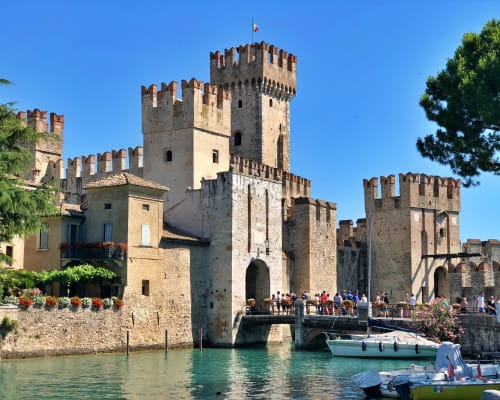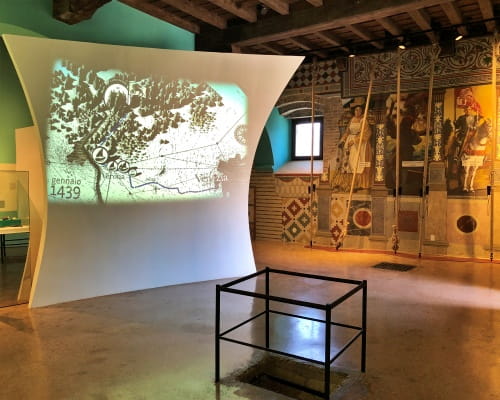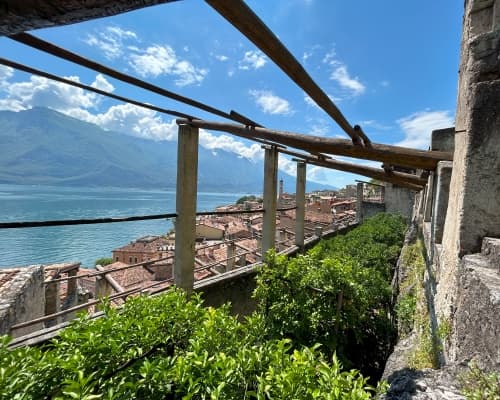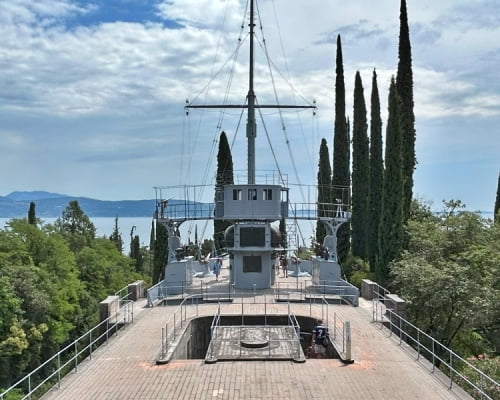The Lake Ledro Pile-Dwelling Museum
History and traditions of people who lived during the Bronze Age on the pile dwellings of Lake Ledro.
Located in the stunning scenery of the Ledro Valley in the Trentino-Alto Adige region, and only a few kilometres away from the nearby town of Riva del Garda, there is the interesting and particular Lake Ledro Pile-Dwelling Museum.
This structure is an integral part of the network of scientific museums and local branches of MUSE in Trentino, a system that combines research, culture and innovation to enhance the local heritage and, since 2012, of ReLED, the museum network of the Ledro Valley.
In this article I'll take you to discover a place where the past dialogues with modernity, a territory where traces of ancient communities are intertwined with an innovative museum itinerary.
The history of the Museum
Opened in 1972, the Lake Ledro Pile-Dwelling Museum collects and exhibits archaeological finds that have emerged during numerous excavation campaigns. The term ‘pile dwelling’ comes from the Latin ‘pala ficta’ or ‘stuck poles’, and refers to a settlement of huts built on a horizontal platform, supported by poles vertically fixed in the ground near water or directly in the water itself.
The discovery of the remains of the pile dwellings of Ledro was completely unexpected and was linked to a particular event. During the autumn of 1929, the level of the lake was lowered due to the construction of the hydroelectric power station in Riva del Garda. Thanks to this action, a huge expanse of over ten thousand piles emerged from the water, belonging to a pile-dwelling village dating back to the Bronze Age (2200-1350 BC).
In 2011, this archaeological site was recognised as a UNESCO World Heritage Site, together with 110 other pile-dwelling villages in the Alpine region. The current form of the museum is the result of a complete renovation that began in the summer of 2019, thanks to a significant investment by the Autonomous Province of Trento.
Curious fact - The Lake Ledro Pile Dwellings Museum building has achieved the LEED® (Leadership in Energy and Environmental Design) GOLD level certification, the most widespread global standard for energy and sustainability certification. This recognition is based on a series of criteria developed in the United States and adopted in over 100 countries, aimed at the design, construction and management of buildings that are sustainable from an environmental, social, economic and health perspective.
The museum itinerary
The layout of the Lake Ledro Pile-Dwelling Museum is characterised by transparency and lightness, welcoming the visitor in a space without boundaries or obligatory routes. Near the entrance, there is a clearly visible information panel with a map of the Museum and a list of '10 statements to start with', that is, a list of ten important phrases that are worth remembering:
- The pile dwellings were not built for defence against 'wild animals'
- The inhabitants of the pile dwellings were Homo sapiens like us
- The inhabitants of the pile dwellings were farmers, not just hunters
- The pile dwellers wore linen and woollen clothes
- The pile dwellers used a complete language
- The pile dwellers buried or cremated their dead
- The Ledro pile dwelling settlement is not from the Stone Age
- The remains of the pile dwelling settlement have been preserved for 4,000 years
- The objects exhibited here were found by excavating the lake bank between the museum and the lake
- The pile dwellings that can be visited outside the museum are hypothetical reconstructions, while the piles still visible in the water are 4000 years old
The thematic areas in the interior of the Museum are divided into four sections, organised along a conceptual axis that goes from the 'large' macro to the 'small' micro:
- Where and when
- Prehlstoric landscapes
- From village to archaeological site
- I, the pile dweller
The route through the museum also includes the QBO, a large glass-walled room designed to host educational activities, events, shows and temporary exhibitions, from which you can admire the lake and the entire archaeological area.
In the outdoor area of the Lake Ledro Pile-Dwelling Museum, you can admire the reproductions of four prehistoric huts, furnished with carefully reproduced tools and objects. Inside these dwellings, you can understand in a very engaging way how the ancient inhabitants of this place lived and organised their lives.
The pile-dwelling village and its inhabitants
The numerous artefacts that can be seen in the Lake Ledro Pile-Dwelling Museum are considered to be real clues that allow researchers to learn about, describe and date the past. Some of these artefacts are typical of certain eras or places and for this reason they are called index fossils.
Thanks to these objects, researchers can catalogue the various stages of development of the archaeological site. The Polada-type ceramic mug and the Ledro-type bronze dagger, found among the remains of the pile-dwellings, are a clear sign that this area was also inhabited at the beginning of the Bronze Age. The Ledro pile-dwellings belong to this period, but some finds reveal that the area was also inhabited during the Copper Age and the Neolithic.
Positioned in the centre of the room is the canoe, a remarkably beautiful and very well preserved artefact. Made from a single block of fir over 5 metres long, the canoe is the most prestigious of the wooden artefacts found during the archaeological excavations. Dating back to around 3,600 years ago, it is presumed that it was used to transport materials between the shores of the lake, or to reach ideal fishing spots.
Village life was intimately linked to the surrounding environment, which provided the resources that were indispensable for carrying out daily activities. Around Ledro, about 4000 years ago, the forests were similar to those we can see today, populated by firs, pines, larches, beeches, birches, ash trees, dogwoods and hazels.
The carpenters and artisans of the time had a deep knowledge of the properties of each type of wood and used them to create the structures of houses, boats, work tools and much more. These skills were also used in the selection of the poles used for the foundations of pile dwellings.
Among the many varieties of wood, larch was mainly used, characterised by a long and straight trunk. Even today, this wood is highly valued for its extraordinary resistance to water and bad weather.
The inhabitants of the pile-dwelling village had a particularly rich and varied diet. Thanks to the extraordinary state of preservation, made possible by being buried in lake sediments, it has been possible to identify a wide range of foods used in ancient times.
The men and women of that time ate wheat, barley, millet, flaxseed, meat, milk, honey, cornelian cherry, elderberry, beechnuts, acorns, berries, pears, apples, figs, fish and even lake oysters. The food residues found at the bottom of some jars have provided valuable evidence about the cooking practices of that time.
Some evidence suggests that wheat was milled using special stones, which have also been found at the archaeological site. The flour obtained from this process was then combined with vegetables to make soups or used to make dough for bread, one of the fundamental pillars of the human diet.
Visiting the Lake Ledro Pile-Dwelling Museum is like travelling back in time, discovering unique artefacts and reconstructions that tell the story of the life of ancient local communities. An unmissable opportunity to learn about the origins of our history in an original and engaging way.
Travel tips - The Lake Ledro Pile-Dwelling Museum is located at Via al Lago, 1 in Molina di Ledro (TN). It can be easily reached with your car from Riva del Garda by following the SS240 road for about 12 kilometres in the direction of Lake Ledro. Alternatively, you can walk or cycle along the scenic Ponale trail that goes from the lakefront in Riva del Garda up to Lake Ledro. More information about opening hours, tickets and discounts can be found on the official website www.palafitteledro.it
Image gallery
Click on the button below to open the image gallery.
How to get to the Pile-Dwelling Museum
Click on the button below to open the detailed map.
What to see on Lake Garda
Many other sights await you, discover them below!






